Understanding CRAC Cooling Units in Data Centers
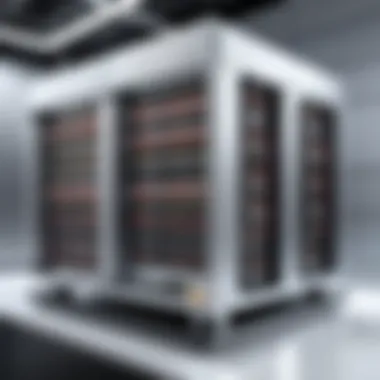
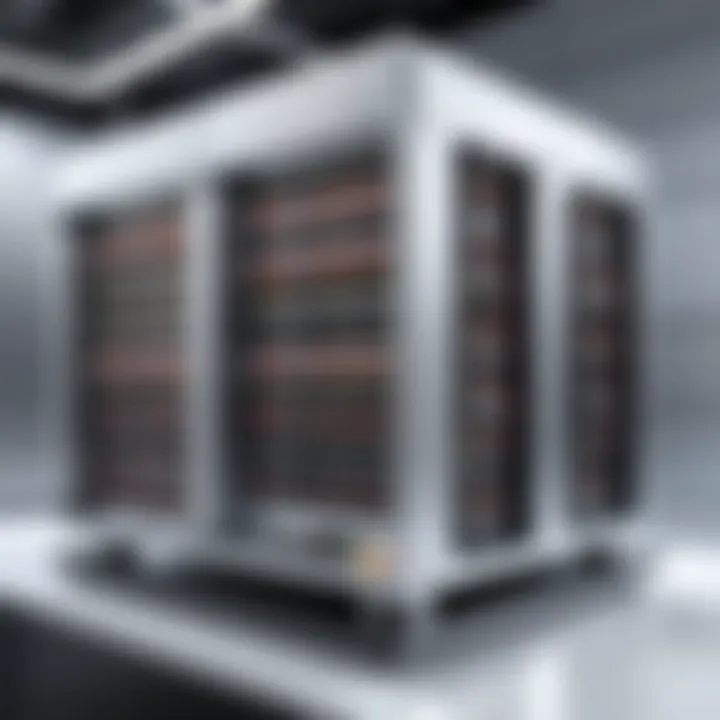
Intro
In today’s fast-paced digital landscape, data centers operate like the beating heart of any organization. The efficiency of these environments can significantly impact overall performance and productivity. At the core of ensuring optimal functionality in data centers are the Computer Room Air Conditioning (CRAC) units. These systems do not merely serve to keep the servers cool; they are integral to maintaining a stable atmosphere where hardware and software can thrive. In this article, we will embark on a journey to unravel the essential role of CRAC cooling units in data center management, highlighting their design, technology, and impact on energy efficiency.
Understanding Storage, Security, or Networking Concepts
Prelude to the Basics of Data Center Operations
When we think about data centers, it's easy to get lost in the complex web of servers, storage, and networking gear. However, understanding the foundational concepts related to storage, security, and networking can provide clarity. For instance, storage devices like solid-state drives (SSDs) are essential in storing vast amounts of data quickly, while network infrastructure facilitates communication between multiple systems.
Key Terminology and Definitions in the Field
Before diving deep into CRAC systems, it helps to familiarize ourselves with some vital terms.
- Data Center: A physical or virtual location used to house computer systems and associated components.
- Cooling Load: The amount of cooling required to maintain a specific temperature in the data center.
- Redundancy: The inclusion of extra components that provide backup in case of failure.
Overview of Important Concepts and Technologies
Understanding CRAC units demands a grasp on cooling technologies that go hand-in-hand with data center management. For example, chilled water systems utilize a central chiller to distribute cooled water throughout the facility, whereas DX (direct expansion) systems use refrigerant to cool the air directly.
"A well-managed cooling system can be the difference between optimal performance and catastrophic failure."
Best Practices and Tips for Data Center Cooling
Tips for Optimizing Cooling Solutions
- Regularly monitor air flows to ensure efficiency.
- Maintain the right temperature—typically between 68-72 °F is ideal for general IT equipment.
- Implement zone cooling, directing cold air to high-density areas.
Security Best Practices and Measures
Protecting the physical assets in a data center is as crucial as managing them. Consider implementing:
- Access controls to limit entry to sensitive areas.
- Surveillance systems for real-time monitoring.
- Regular audits to ensure compliance with industry standards.
Networking Strategies for Improved Performance
The interplay between networking and cooling is often overlooked. Ensure your network infrastructure is set up to:
- Minimize latency by optimizing data paths.
- Balance loads to prevent hotspots where cooling is most needed.
Industry Trends and Updates
Latest Trends in Cooling Technologies
Innovations in cooling solutions are on the rise. Companies are increasingly integrating:
- AI-driven cooling systems, which adapt to workload changes in real-time.
- Liquid cooling alternatives, reducing the reliance on conventional air conditioning.
Cybersecurity Threats and Solutions
In the realm of data center security, threats loom large. A breach can decimate operations. Stay ahead by adopting:
- Encryption protocols to safeguard sensitive data.
- Advanced security analytics for proactive threat detection.
Networking Innovations and Developments
Next-gen networking technologies, such as Software-Defined Networking (SDN), are enabling more agile and efficient communication between devices in data centers. This flexibility allows for better alignment with the cooling systems, ensuring energy is used where it’s needed most.
Case Studies and Success Stories
Real-life Examples of Successful Cooling Implementations
One organization successfully reduced its cooling costs by 30% after switching from traditional air conditioning to an innovative chilled beam system. The key was in integrating real-time data monitoring, allowing rapid adjustments to cooling as server loads fluctuated.
Cybersecurity Incidents and Lessons Learned
A notorious data breach in a well-known corporation showed that inadequate physical security measures were as detrimental as poor cyber defenses. This led to an overhaul of their security protocols, including better monitoring and segmented access to critical areas.
Networking Case Studies Showcasing Effective Strategies
Another facility implemented a network redesign that minimized cross-talk between systems, which in turn reduced hot spots. This case underscores the importance of an integrated approach to both cooling and data management in a data center.
Reviews and Comparison of Tools and Products
In-depth Reviews of Cooling Tools and Systems
While many CRAC units are available on the market, the comparison between brands such as Liebert, APC, and Schneider Electric reveals varying capabilities and efficiencies. It’s crucial to evaluate their specifications against your data center’s precise needs.
Evaluation of Networking Equipment and Services
Just as cooling systems need regular updates, so too does your networking equipment. Brands like Cisco or Arista offer different features that cater to specific environments, enhancing performance while complementing cooling measures.
In summary, understanding CRAC cooling units and their place within the broader context of data center management is essential. As technology evolves, keeping an eye on practices, trends, and tools will help ensure that data centers run smoothly and efficiently.
Prolusion to CRAC Cooling Units
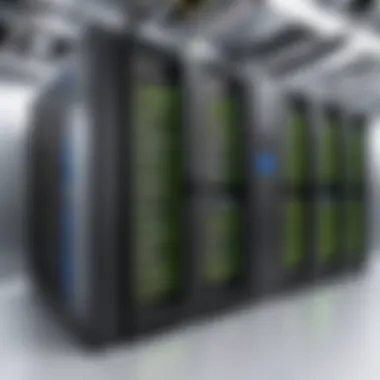
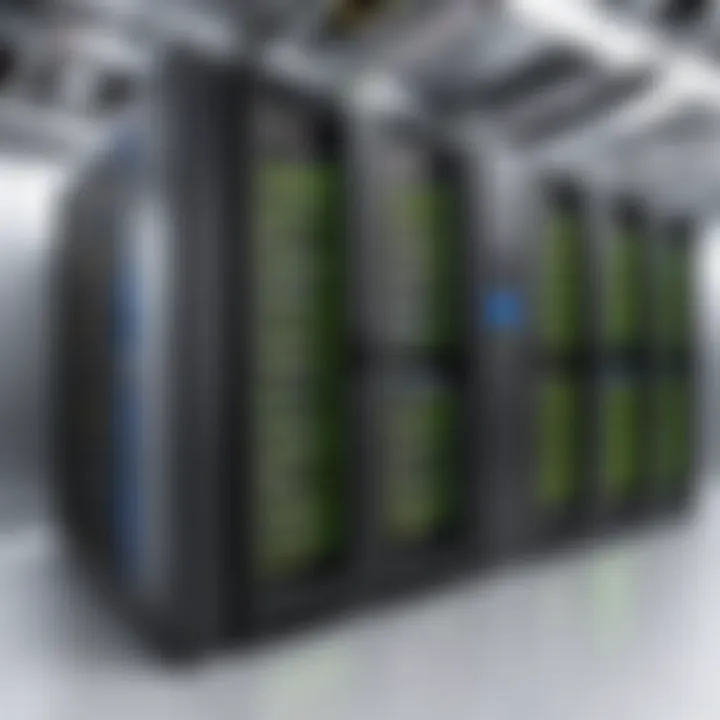
In the world of data centers, the significance of cooling systems can’t be overstated. CRAC units, or Computer Room Air Conditioning units, are not just a nice-to-have; they are a fundamental pillar that supports the entire IT infrastructure. When electronic equipment operates, it generates a substantial amount of heat. Without proper cooling, this heat can affect performance, lead to downtime, and considerably shorten the lifespan of equipment. This article will delve into why understanding CRAC units is critical for effective data center management.
Not only do CRAC units maintain consistent temperature levels, they also tackle humidity concerns. Excess moisture can cause electrical shorts, rust, and other issues. By controlling humidity, CRAC systems contribute to a safe and efficient operational environment. In a nutshell, CRAC units are the unsung heroes of data centers, ensuring that everything runs smoothly and reliably.
Definition of CRAC Units
CRAC units are designed specifically for cooling electronic equipment in computer rooms and data centers. Unlike typical air conditioning systems, CRAC units are specially engineered to handle the unique challenges posed by high-density server environments.
They usually incorporate advanced cooling technology, such as direct expansion coils and variable speed fans, allowing them to adapt to the needs of various IT loads easily. Essentially, a CRAC unit works by drawing in warm air from the room, cooling it, and then circulating it back into the space to maintain optimal operating conditions.
History and Evolution of Cooling Solutions
The concept of cooling systems can be traced back to the early 20th century, but the development of dedicated CRAC units didn’t begin until the needs of data centers became more pronounced in the 1980s. Initially, many data facilities relied on standard HVAC systems, which were neither efficient nor capable of handling the concentrated heat generated by server racks.
Over the decades, as technology advanced, so too did cooling solutions. The introduction of precision cooling meant that architects could design data centers with much denser server configurations, allowing businesses to make better use of space. Innovations such as in-row cooling and chilled beams signify the evolution of cooling solutions, each adaptation finely tuned to meet the demands of ever-evolving IT environments.
"The history of cooling solutions is a testament to our capacity for innovation, proving that with each challenge comes a new opportunity for improvement."
In wrapping up this section, one can appreciate that CRAC units have matured in tandem with IT infrastructures, offering more efficient and reliable options to keep equipment performing at its best.
The Importance of Temperature Control
In the world of data centers, maintaining an optimal environment is not just a side note; it’s a matter of survival for the equipment housed within. The key player in this equation is the CRAC cooling unit, ensuring that the internal climate remains consistent with the needs of IT equipment. Failures in temperature control can lead to significant downtime, lost data, and expensive repairs. This section delves into how temperature control affects overall data center efficiency and the lifespan of critical hardware.
Impact on IT Equipment Performance
To say that heat can be detrimental to IT equipment would be putting it mildly. Each piece of hardware, from servers to networking gear, is designed to operate within specific temperature ranges. When the environment becomes too warm, performance can degrade. This is particularly true for high-density setups where servers generate substantial heat. When temperatures climb, processors may throttle their performance to keep from overheating, leading to sluggish response times.
Key points include:
- Processor Throttling: In an effort to prevent damage, processors will reduce their speed when they get too hot, sacrificing performance.
- Increased Latency: Network devices operating in excessive heat can experience increased latency, affecting application performance across the board.
- Long-Term Impacts: Consistent high temperatures can lead to a slow but certain decline in hardware lifespan, resulting in more frequent replacements and increased operational costs.
Preventing Hardware Failures
There’s an old saying in the tech world: never ignore the heat. In data centers, it’s wise advice. Poor temperature control can trigger hardware failures—sometimes catastrophically so. Components are not built to endure high temperatures indefinitely, and this cannot be overstated. Overheating can result in physical damage, such as burnt circuit boards or failed power supplies.
Humidity also plays a role; excessive moisture can corrode internal components.
Benefits of Proper Temperature Control:
- Reduced Risk of Failures: Keeping temperatures steady minimizes the chance of hardware damage and failure, maintaining both availability and reliability.
- Lower Maintenance Costs: Environments that remain cool and dry require less frequent servicing and replacement parts, resulting in cost savings.
- Enhanced Data Integrity: A controlled climate helps preserve the integrity of both stored data and the equipment used to manage it.
“A few degrees can make the difference between a thriving data center and one that is plagued with issues.”
In summary, thoughtful temperature control is essential in a data center’s success. The direct correlation between the operating environment and equipment reliability underscores why CRAC units aren’t merely supplemental—they are essential. When selecting or operating these cooling systems, the effect on IT performance and hardware longevity should be central considerations.
CRAC Unit Components and Functionality
Understanding the components and functionality of CRAC (Computer Room Air Conditioning) units is crucial for anyone involved in data center management. Each component plays a specific role in ensuring that the cooling systems run effectively, maintaining the stability and reliability of IT operations. It’s not just about keeping the room cool; it’s about maximizing performance, minimizing risks, and enhancing the overall longevity of critical equipment.
Key Components of CRAC Systems
The inner workings of a CRAC system can be dissected into several key components, each with their own significant contributions. Let’s explore how these components work together to uphold the temperature and humidity levels needed for data centers.
Compressor
The compressor sits at the heart of the cooling system, acting as a pump that circulates refrigerant throughout the unit. It can be seen as the workhorse of the CRAC system. Its main job is to compress and elevate the pressure of the refrigerant, allowing it to absorb heat from the environment effectively.
Its key characteristic is the ability to manage varying loads. This flexibility is essential as it adjusts the cooling output based on real-time requirements, making it a cost-efficient choice for many. A unique feature of modern compressors is their use of variable speed technology, enabling them to operate quieter and more efficiently than traditional models. However, one should be mindful of their maintenance needs—if neglected, compressors can become costly to repair.
Evaporator Coils
Evaporator coils function as the heat exchangers that facilitate the cooling process. This is where the refrigerant absorbs the heat from the air in the data center. The primary characteristic of evaporator coils is their large surface area, which allows for maximum heat transfer. These coils are vital for maintaining optimal air temperature and can be positioned in various locations to optimize airflow.
One of the unique features of evaporator coils is their fin design, which enhances the cooling efficiency. However, over time, dust and debris can accumulate on these fins, hindering performance. Regular cleaning is beneficial to avoid potential operational issues.
Fans and Blowers
Fans and blowers work in tandem to facilitate air circulation, delivering cooled air throughout the data center. Their role is critical for maintaining even temperatures across all equipment. These components are known for their ability to exhaust hot air from the space and draw cool air into the CRAC unit.
One notable aspect of fans and blowers is their energy efficiency. Newer models offer improved designs that reduce energy consumption while maintaining airflow. On the downside, aging fans may produce noise and are sometimes overlooked in maintenance schedules, which can lead to inefficient cooling over time.
Control Systems
Control systems are the brain behind CRAC units, managing the various components to ensure everything operates smoothly together. They regulate when the compressor should turn on or off, monitor temperature, and can often alert technicians about any anomalies. The strength of these systems lies in their automation capabilities. Most modern CRAC units come equipped with advanced control systems that can be integrated into a data center's overall automation framework.
A unique feature of these systems is the ability to provide real-time data analytics. This data helps facility managers decide when to perform maintenance and can improve energy efficiency sustainably. Though, complex control systems can require specialized knowledge for troubleshooting, which can be a drawback in some scenarios.
How CRAC Units Operate
CRAC units operate on a cycle of compressing and evaporating refrigerant that removes heat from the air, which in turn is circulated back into the room. Understanding this cycle is critical to maintaining the delicate balance of cooling needs in data centers. The combination of the components mentioned earlier creates a robust mechanism to ensure that the temperature remains within the acceptable range to protect valuable IT infrastructure.
One should remember that maintenance plays an essential role in the efficiency and longevity of CRAC units. Knowing the components, how they function, and the importance of regular maintenance schedules can prevent costly downtimes and extend the functionality of the datacenter’s cooling system.
Proper maintenance is less costly than the risk of hardware failure.
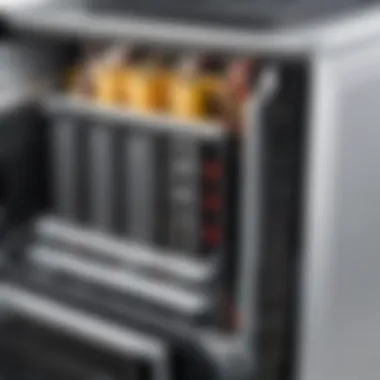

Having a grasp of these components underscores their importance not just individually, but in relation to the entire cooling system. This interconnectedness not only highlights the significance of each part but also the collective goal they achieve—ensuring that data centers can operate smoothly without thermal interruptions.
Different Types of CRAC Cooling Units
When it comes to CRAC cooling units, they're not all cut from the same cloth. Each type has unique attributes that can greatly influence the efficiency and effectiveness of a data center’s climate control. Choosing the right CRAC unit means understanding the variances in cooling technologies and how these adaptations can cater to specific data center needs.
Traditional CRAC Units
Traditional CRAC units have been around the longest, serving as the backbone of climate control in many data centers. These units typically operate with a chilled-water cooling system. They utilize a compressor to cool the air, much like an oversized air conditioning unit you might find in a home.
Key features include:
- Reliability: Known for their robust design, they're often favored where consistent cooling is critical.
- Scalability: Can easily be expanded by adding more units as the need arises.
- Familiarity: Many technicians are well-versed in their operation and maintenance.
The downside is that traditional CRAC units may not be the most energy-efficient option. This inefficiency can lead to increased operational costs, especially as energy prices continue rising. Hence, it's crucial for data center managers to weigh the benefits against potential long-term expenses.
In-Row Cooling Solutions
In-row cooling solutions have emerged as a more modern approach to cooling in data centers. Unlike traditional systems that may be located far from the equipment racks, in-row units sit directly between server racks. This proximity helps to enhance cooling efficiency by reducing the distance over which air must travel.
Advantages include:
- Precision Cooling: Directly targets the heat generated by the servers themselves, which improves performance.
- Reduced Hot Spots: This localized cooling mitigates the risk of temperature variations in different areas of the data center.
- Better Space Utilization: Optimizes available floor space without compromising functionality.
However, these units can be more complex to set up and require careful design considerations to maximize their efficiency. Therefore, they are often best suited for newer data centers or those undergoing upgrades.
Chilled Beam Technology
Chilled beam technology is a cutting-edge solution that utilizes convection to cool space effectively. This approach relies on the principle that warm air rises, a natural phenomenon that keeps efficiency in check. Chilled beams can either be passive or active, with the latter involving mechanical fans to enhance air circulation.
Notable benefits of chilled beam systems:
- Energy Efficiency: These systems tend to use less energy compared to traditional CRAC units, reducing operational costs over time.
- Minimal Noise: With fewer mechanical components, they operate quietly, making them suitable for environments where noise reduction is a priority.
- Reduced Maintenance: Few moving parts mean less wear and tear, leading to decreased maintenance needs.
Nonetheless, proper humidity control is essential in this type of system, as they can create condensation if not managed correctly. Thus, it's vital to assess the specific environmental conditions before opting for chilled beam technology.
"Selecting the appropriate type of CRAC cooling unit involves understanding the unique needs of the data center, balancing efficiency, effectiveness, and operational costs."
Choosing the Right CRAC Cooling Unit
Choosing the right CRAC cooling unit can be a game changer for data centers. This decision doesn't just impact the initial setup but also the operational efficiency, energy consumption, and ultimately the bottom line. It's about the difference between a smooth-running facility and one that’s constantly battling overheating issues. As technology advances and data centers evolve, the need for the most suitable CRAC unit becomes increasingly important. Factors like size, cooling capacity, and energy usage are only the tip of the iceberg. We need to dive deeper into individual requirements, as every data center has its unique challenges.
Assessing Data Center Requirements
When it comes to selecting CRAC units, assessing the specific needs of a data center is paramount. This means understanding the layout, the amount of heat generated by the IT equipment, and airflow patterns. A detailed analysis should include:
- Heat Load Calculation: This assesses how much heat your equipment generates, which informs the cooling capacity needed.
- Equipment Density: Knowing how densely equipment is packed gives insights into how much cooling is necessary in various zones of the data center.
- Future Growth Projections: Anticipating future needs is vital, especially as technology keeps advancing. It’s wise to think a few steps ahead.
By gathering and analyzing this information, data center operators can pinpoint the optimal CRAC system that would serve current demands while accommodating growth.
Evaluating Energy Efficiency
Energy efficiency is another critical consideration. With rising energy costs and environmental concerns, selecting a CRAC unit that ticks the boxes for energy efficiency isn't just nice to have; it’s a must. Two key metrics come into play here:
PUE - Power Usage Effectiveness
Power Usage Effectiveness, or PUE, represents a key performance indicator in the data center world. It’s a straightforward calculation of the total building energy usage divided by that used by the IT equipment alone. The lower the number, the better.
- Key Characteristic: A PUE of 1.0 would mean 100% of the energy is used for IT equipment
- Why It’s Beneficial: It provides a clear metric for comparing energy efficiency across different data center designs. Keeping this number low leads to savings that can be significant over time.
- Unique Feature: PUE allows facility managers to spot inefficiencies quickly. If PUE starts creeping up, it’s a red flag.
- Advantages: Monitoring this figure helps in budgeting for energy costs and improving operational efficiency overall.
- Disadvantages: That said, PUE is sometimes criticized for not taking into account the complexities and variabilities of different data center designs.
SEER - Seasonal Energy Efficiency Ratio
The Seasonal Energy Efficiency Ratio (SEER) is another metric gaining traction, especially in the discussion of cooling performance. It measures how efficiently a cooling system operates over the season, rather than just in a controlled environment.
- Key Characteristic: It factors in both cooling output and energy used, thus providing a seasonal perspective rather than a snapshot.
- Why It’s Beneficial: SEER helps in understanding how CRAC units will perform during different environmental conditions throughout the year, making it an important element for planning.
- Unique Feature: Unlike steady-state measures, SEER can provide insights on energy consumption under various loads, reflecting the reality of fluctuating data center workloads.
- Advantages: Operators can optimize their cooling systems according to real-world usage patterns, informing improvements and upgrades.
- Disadvantages: On the flip side, SEER may vary significantly based on geographical location, making comparisons more challenging.
Insight: The ultimate goal of choosing the right CRAC unit should align with both current needs and future adaptability, ensuring optimal performance without over extending the budget.
Energy Efficiency in CRAC Systems
In an era where energy consumption is scrutinized more than ever, energy efficiency in CRAC systems becomes a crucial theme in data center management. Every keystroke on a server generates heat, necessitating a sophisticated cooling solution. Initiatives for energy efficiency not only sustain an optimal operating environment for IT equipment but also have significant implications on operational expenditures and environmental impact.
Effective CRAC systems should ideally operate with the
CRAC Unit Maintenance Best Practices
Maintaining Computer Room Air Conditioning (CRAC) units is not just a minor task; it is the bedrock of an efficient data center operation. Well-maintained CRAC units ensure that IT equipment operates at optimal temperatures, ultimately preventing costly downtimes caused by overheating. In this section, we will examine two fundamental practices that are critical for effective maintenance: regular inspections and servicing, along with the cleaning and replacement schedules.
Regular Inspections and Servicing
Regular inspections and servicing of CRAC units allow for the early identification of potential issues before they escalate into major problems. Think of these inspections as the health check-ups for your cooling systems. Imagine running a marathon without ensuring your gear is in check; you'd risk not finishing. Likewise, without regular inspections, your data center could face equipment failures due to overheating. Inspectors should pay close attention to several key components that contribute to a CRAC unit's performance—such as the compressor, evaporator coils, and fans. Here are some practices that help:
- Visual Checks: Routine visual inspections can catch leaks, corrosion, or any signs of wear and tear. Having a keen eye can sometimes be the difference between a smooth operation and a crisis.
- Temperature Monitoring: Make note of the temperature and humidity levels around the CRAC units. Any deviation from the norms should raise alarms.
- Performance Assessments: Analyzing airflow and ensuring that there are no obstructions in the inlet or outlet can help maintain efficiency.
Scheduling these inspections—ideally every quarter—provides a structured approach. Not only does it enhance reliability but it can also prevent unnecessary expenses long-term.
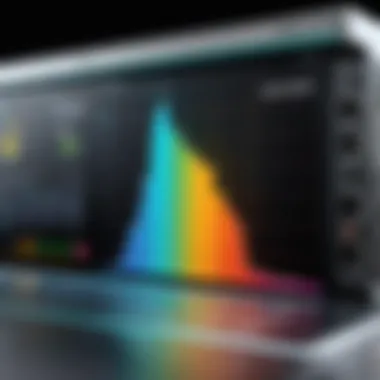
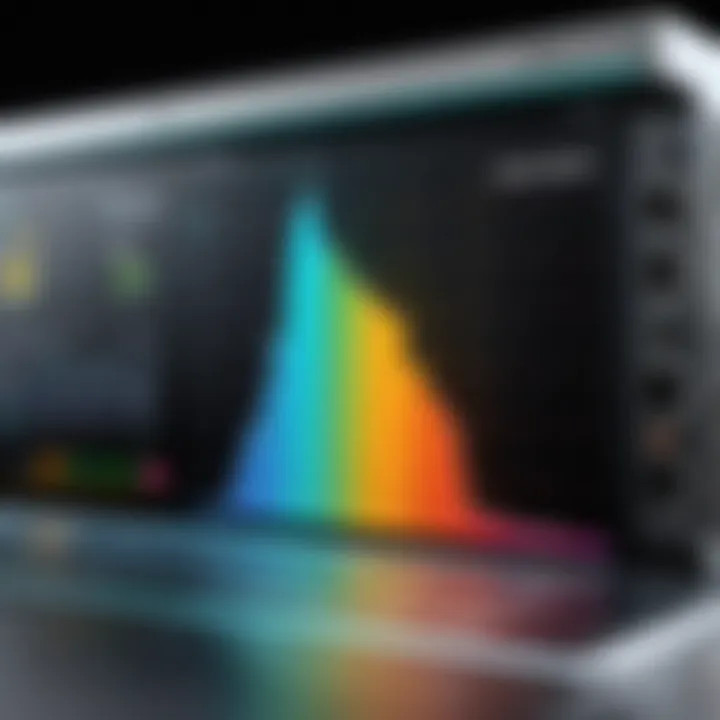
Cleaning and Replacement Schedules
Cleaning and replacement schedules are equally important in CRAC unit maintenance. Just like how your car requires regular oil changes, CRAC systems need to be kept free from dust and grime that can hinder airflow and efficiency. Poor cleanliness can cobweb performance, leading to cooling inefficiencies that may result in overheating. Here’s how to approach this task:
- Filter Changes: Air filters can become clogged with dust and particulates. Changing them as needed—usually every month—helps maintain optimal air quality and flow.
- Coil Cleaning: Coils can build up residue over time, so cleaning them bi-annually or even quarterly prevents this issue. Dirty coils force the unit to work harder, leading to increased energy consumption.
- Inspection of Supply and Return Ducts: Regular inspections can ensure that these ducts are free from obstructions or dust build-up.
By adhering to these cleaning and replacement schedules, IT managers can improve the efficiency of CRAC units, thus prolonging their lifespan. In the words of a wise person, "An ounce of prevention is worth a pound of cure," and this rings especially true for data center environments.
In summary, good maintenance practices for CRAC units not only reduce the risk of equipment failure but also improve energy efficiency and, ultimately, can save money. As data centers grow, establishing a systematic approach to these maintenance tasks becomes imperative.
Challenges in CRAC Unit Implementation
Implementing Computer Room Air Conditioning (CRAC) units in data centers comes with its fair share of obstacles. These challenges can significantly affect the functionality and efficiency of the cooling systems, making it crucial for stakeholders to address them effectively. Understanding these issues not just helps in mitigating risks but also assists in optimizing the overall performance of IT infrastructure.
Humidity Control
One of the toughest nuts to crack in CRAC unit implementation is managing humidity levels. High humidity can lead not just to corrosion of hardware but also to an increase in energy use as the cooling systems have to work overtime to achieve the desired temperature. Conversely, too low humidity can create static electricity, which poses a risk to sensitive electronic components.
Managing this delicate balance requires a strategy that may involve the installation of humidistats or dedicated humidifiers in parallel with CRAC systems. Regular monitoring can ensure that humidity levels stay within a safe range, typically around 45-55%.
- Benefits of Effective Humidity Control
- Protects sensitive equipment from damage
- Enhances efficiency of the cooling systems
- Reduces risk of operational disruptions
Dealing with humidity in a data center isn’t just a matter of comfort; it's crucial for maintaining the integrity of the entire setup. Being proactive rather than reactive can significantly improve uptime and hardware lifespan.
Overcoming Space Constraints
Space constraints pose another significant challenge in CRAC unit installation. With the growing density of data center equipment, these facilities often feel like a game of musical chairs where more and more hardware jostles for limited breathing room. This is where creativity comes into play.
Solutions to space constraints can range from vertical installations to modular CRAC units that can fit into small spaces. It can also include re-evaluating the layout of other equipment in the data center to optimize the airflow.
- Strategies for Space Optimization
- Vertical Cooling Solutions: Utilizing modern designs that stack cooling units effectively.
- In-Row Cooling Solutions: Placing cooling directly between rows of servers for more efficient temperature control.
- Flexible Layouts: Designing data center layouts with adaptability in mind, to easily accommodate future equipment.
Implementing smart design choices can drastically alter the effectiveness of CRAC systems under space constraints, allowing for better airflow and improved cooling efficiency.
Understanding these challenges may seem daunting, but with the right approach, data center managers can implement solutions that not only address space and humidity but also make full use of the functionalities offered by CRAC units. Recognizing issues before they escalate can turn a potential setback into a stepping stone for improved data center operations.
Future Trends in CRAC Technology
As we venture deeper into the realm of data center management, it becomes increasingly evident that the landscape of CRAC cooling units is not static. The swift pace of technological advances propels a need for innovative cooling solutions. Understanding future trends in CRAC technology is not just a matter of keeping up; it’s about strategically positioning data centers for efficiency and sustainability. These trends integrate new tools and methodologies that can significantly affect operational performance and energy consumption.
AI and Machine Learning
The ascendancy of artificial intelligence (AI) and machine learning in data center operations is nothing short of revolutionary. These technologies are reshaping how CRAC units function by providing intelligent monitoring and predictive analysis capabilities. For instance, AI can analyze temperature data in real-time and make autonomous adjustments to cooling units, optimizing temperature distribution across the data floor.
Imagine a scenario where a sensitive server rack generates an unexpected heat spike. With AI-driven monitoring, the system immediately detects this anomaly and adjusts the cooling output accordingly. This not only maintains optimal operating conditions but can also extend the lifespan of IT equipment.
Moreover, machine learning algorithms can analyze historical performance data to forecast future cooling demands, optimizing energy use throughout the day. As these systems learn from past patterns, they become adept at predicting when to ramp up or reduce cooling. This level of adaptability is crucial in environments where workloads can be unpredictable, ensuring that facilities run efficiently while avoiding unnecessary energy expenditure.
“The melding of AI with CRAC technology enables data centers to be proactive rather than reactive, significantly enhancing uptime and reliability.”
Liquid Cooling Solutions
Another notable area of evolution is in liquid cooling solutions. Traditional air-cooled systems, while reliable, are quickly reaching their limits in terms of efficiency. Liquid cooling presents a compelling alternative that promises both energy efficiency and enhanced cooling performance. This approach involves utilizing liquid, often chilled water or dielectric fluids, to absorb and dissipate heat.
Several advantages come with liquid cooling technologies:
- Higher Heat Dissipation: Liquids can carry heat away from components more effectively than air, making them ideal for high-density environments.
- Space Efficiency: By replacing bulky air conditioning units with compact liquid cooling setups, data centers can optimize their physical layout, allowing for greater densities of server racks.
- Noise Reduction: Liquid systems tend to operate with less noise than their air-cooled counterparts, creating a more agreeable work environment.
Emerging technologies, such as direct-to-chip cooling, facilitate even further enhancements. This process involves transferring heat directly from the chip into a liquid coolant, allowing for superior cooling without the intermediate layers of air. As organizations continue to push the boundaries of computing power, liquid cooling may become a standard due to its efficient performance under high loads.
This integration of liquid cooling in CRAC technology represents a promising shift toward sustainable practices. As data centers strive to reduce their carbon footprints, the efficiency gains facilitated by these cooling systems become ever more appealing.
Finale
The significance of CRAC cooling units within the context of data center management cannot be overstated. As data centers continue to expand and evolve, the demand for efficient temperature regulation escalates simultaneously. The reliance on CRAC units forms the backbone of maintaining ideal operating conditions for IT infrastructure.
Effective cooling directly influences both the performance of IT equipment and the longevity of these critical assets. When data centers run hot, the risks to hardware escalate, potentially leading to significant outages or failures. Thus, ensuring proper cooling with CRAC systems not only protects investments but also fosters continuous operation, a must in today’s always-on digital world.
"Investing in efficient CRAC solutions is investing in the reliability and efficiency of your entire data ecosystem."
The benefits extend beyond just protecting hardware. A well-optimized CRAC unit can lead to noteworthy improvements in energy efficiency. The implications for operational costs are substantial; the less energy consumed for cooling, the more that can be directed toward other pivotal areas of the business. Coupled with the ongoing trends towards green technology, the discussion around CRAC units takes on a broader significance: contributing to sustainability efforts while maintaining performance.
Today, data center managers must consider some crucial elements regarding CRAC units, from the selection process to ongoing maintenance. They need to assess specific cooling requirements, warranty stipulations, energy consumption, and future scalability.
Moreover, as we delve into future expectations, the evolution of CRAC units signals an era where technology drives improvement. AI, machine learning, and innovative cooling solutions are on the horizon, outcomes that will alter how we understand and implement these systems. By staying attuned to these developments, IT professionals can ensure that their facilities are not only up to date but also primed for the operational challenges ahead.
In wrapping up, the conversation surrounding CRAC cooling units is one of necessity and forward-thinking, a blend of current functionality and future innovation. Every choice, from design to maintenance, plays a pivotal role in defining how data centers maintain their edge in a fast-paced, tech-driven environment.
Recap of Key Insights
To encapsulate, key insights highlighted within this discourse focus on:
- The critical function of maintaining temperature control in data centers to enhance equipment lifespan.
- The relationship between effective cooling solutions and overall energy efficiency, underscoring the impact on operating costs.
- The necessity for regular assessments and updates in CRAC technology to keep pace with evolving data center needs.
The Ongoing Evolution of CRAC Units
The trajectory of CRAC units ensures that they remain integral as data center infrastructures develop. As we look ahead, advancements in cooling technologies are pivotal. The revolutionary integration of AI and machine learning not only optimizes performance but also fine-tunes the responses of CRAC units to changing conditions in real-time.
Liquid cooling solutions also emerge as relevant competitors, providing innovative pathways that could redefine thermal management strategies. By capitalizing on these trends, data centers can get ahead of energy consumption challenges, establishing a blend of efficiency and reliability at the core of operations.



